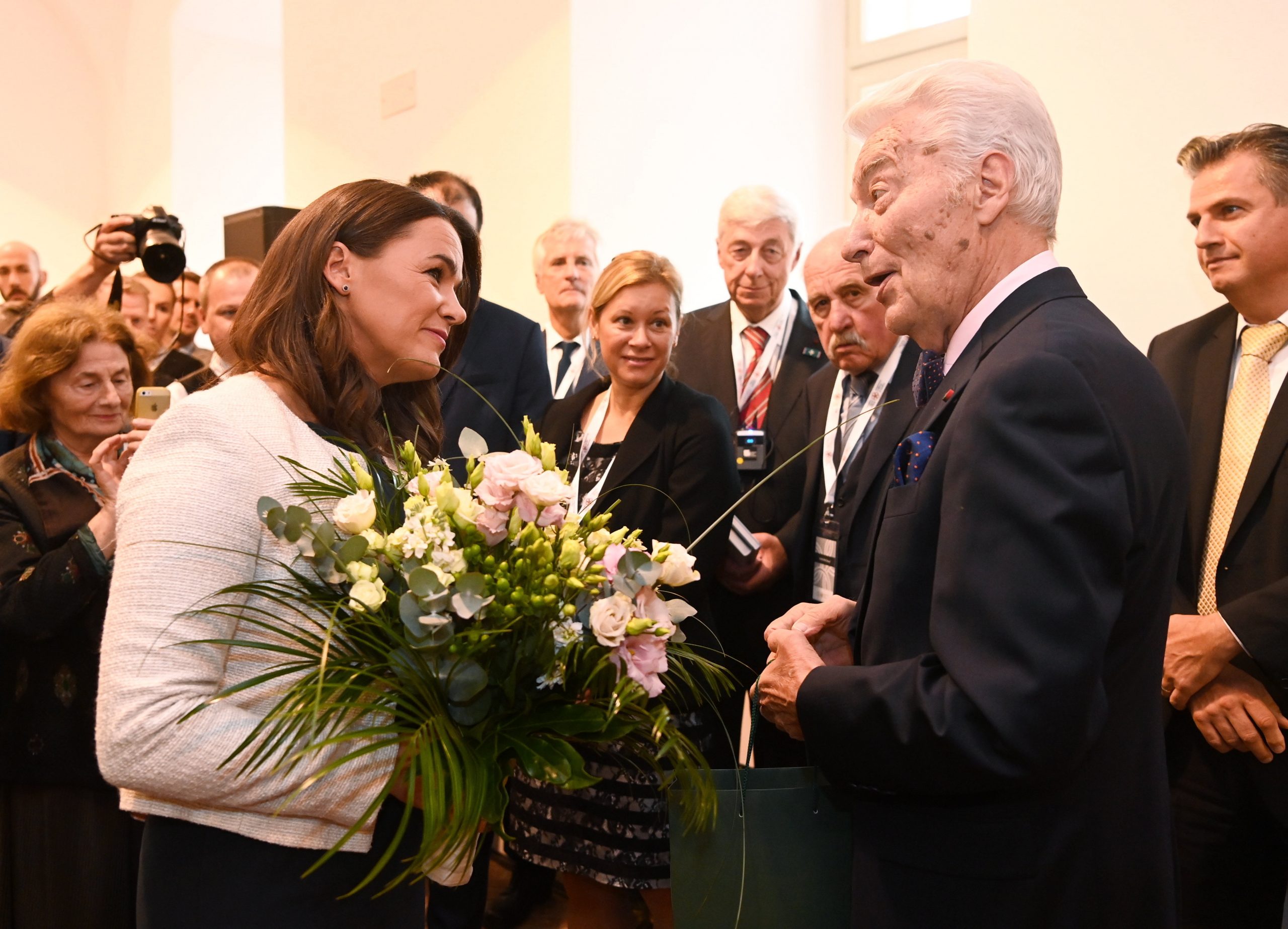
Katalin Novák has delivered her address at her official residence in Sándor Palace in the Buda CastleContinue reading
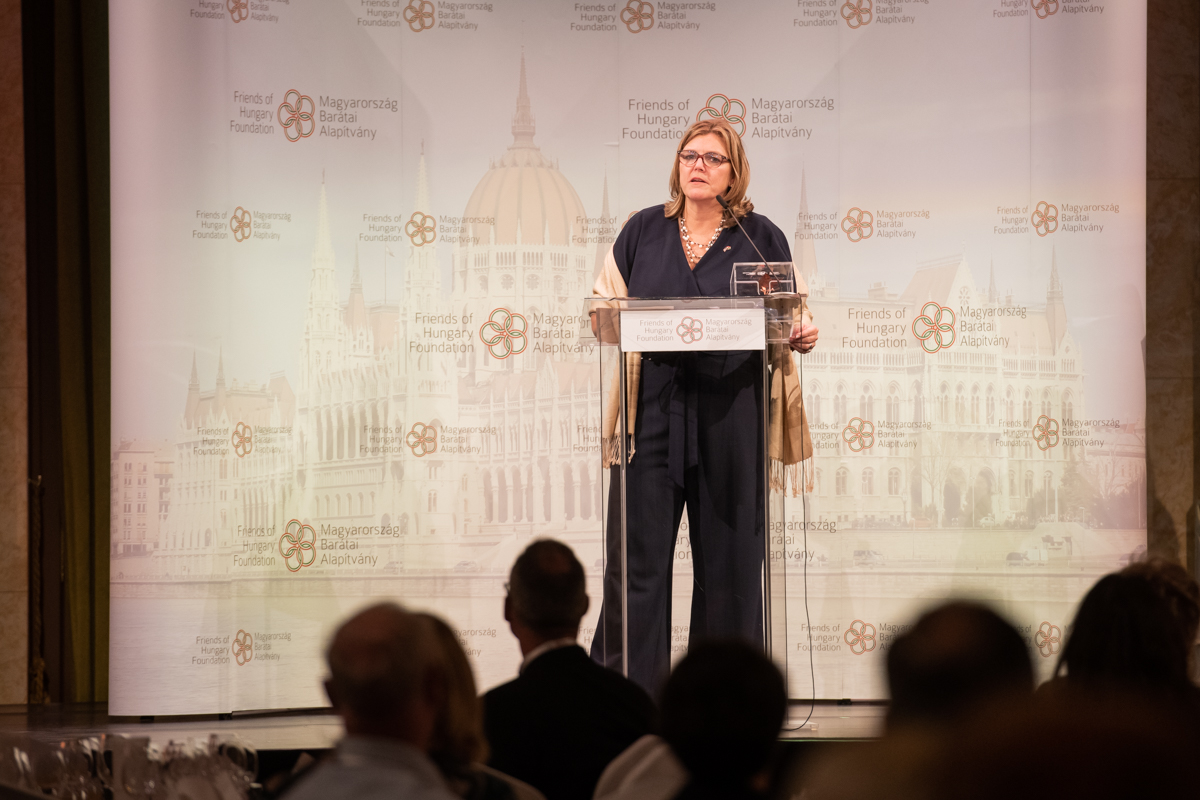
The Friend of Hungary Award has been awarded for the fifth time in 2022. One of the recipients is the Hungarian American Coalition, the largest umbrella organization of the American Hungarian community, which was founded 31 years ago, among others by Edith Lauer, who unfortunately could not attend the conference. The award was received by her daughter, Andrea Lauer Rice, the President of the Hungarian American Coalition, whom we asked about their activities and goals. “I think we all have to be friends of Hungary – in whatever way we can. It is an important part of us,” Andrea Lauer Rice told us.
What have been the main goals of the Coalition?
When we were founded, we had a very specific set of goals on promoting culture and history, helping develop democratic institutions, monitoring human rights of Hungarians in the region, creating scholarship programs, and more. Some of those have remained the same and others have evolved over time. We are now very active in finding ways to strengthen our community so that we can better build the bridges and strengthen ties with Hungary and with the ethnic Hungarian communities around the Carpathian basin. Our scholarship and internship programs serve one of our most important goals: providing leadership training and opportunities for the next generations of Hungarians, not just from Hungary, but from all across the region to come to the US, to gain experience, to build their network. We have more than 450 alumni of the Dr Elemer and Eva Kiss Scholarship Program in the US and Bognar Bela Family Scholarship Fund in the Carpathian Basin, and another 99 alumni of the John N Lauer Leadership Training Program. Another goal is to bring Hungarian leaders to the US to share their stories in their own words with US decision makers, and to bring US leadership to Hungary and the Carpathian basin so they see everything with their own eyes. This can make a huge difference.
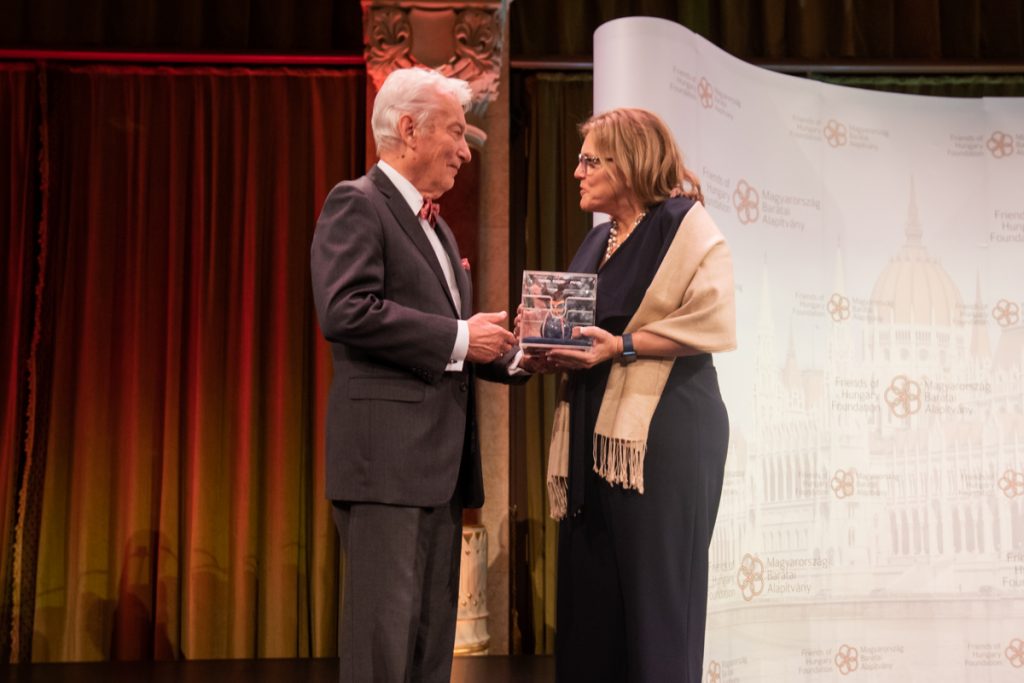
Szilveszter E. Vizi, President of the Friends of Hungary Foundation with Andrea Lauer Rice
One of your big projects right now is a fundraising campaign for refugees from Ukraine. How does it work?
The goal of this campaign is to provide humanitarian assistance to refugees fleeing the war in Ukraine to Hungary. We were among the first to launch a campaign like this in our community in the US. Within hours of the Facebook campaign launch, I got calls from several of our member organizations and they asked to combine forces and link with our campaign instead of launching a separate initiative. It’s been a really wonderful example of what we can accomplish when the whole community works together. To date, we’ve raised about $120,000 and the projects are fantastic. We have been working together with organizations on the ground who can make sure the supplies get where they are most needed: the Hungarian Maltese Charity Service, the Hungarian Interchurch Aid, local governments, and others. One of our recent projects saw us purchasing a mobile pop-up unit manufactured by Hungarian company, Continest. It is now in Odessa serving as an emergency room. We worked with Creative Cultural Exchange, a HAC member, on their WeCare project, to pay for shipping of more than 1,600 boxes of medical supplies they collected from the US to Hungary to be transported to Ukraine. We worked with our member, the Hungarian Club of Chicago on helping fund an initiative in Bakonybel to house refugee families. Lots of great examples.
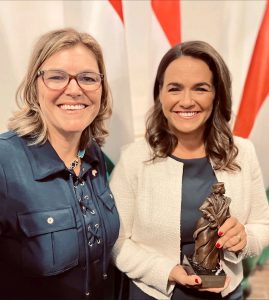
You mentioned in your speech another big project which has been a personal dream of yours.
I grew up hearing the stories of 1956 from my entire family, especially my Mother, Aunt and Grandmother. I’ve dreamt of creating a 1956 statue to honor them in Atlanta, GA. I’m thrilled to report that after several years, a new freedom fighter statue by world-renowned American sculptor Stan Mullins will be unveiled on October 23 in Atlanta. She is 14 feet high, made of Georgia granite. We will have a plaque highlighting our donors and a QR code in front of the statue, that will lead to a website with all the history and personal stories of the donors. We’re hosting a multimedia exhibit and extending invitations to the international community and all ’56-ers and families of ’56-ers. It is going to be an exciting and historic event. I have been truly honored to be able to record so many people’s stories of 1956 through Memory Project, a visual history archive, which I co-founded in 2015 with Reka Pigniczky and I feel like this statue is an extension of that work for me. It’s a way to record history and honor our freedom fighters and share the stories with others. I think 1956 was a huge moment in history globally, but also personally for ’56-ers and their families. Now, through the statue, through the website, through the exhibit, we are able to show these stories to a much wider audience.
What is the story behind the unique gift you brought to President Katalin Novák?
We made the decision to create maquettes – trophy-size, bronze replicas of the statue – and give them to our major donors and place them in all Hungarian American Museums, so that more people could be inspired by the statue. It is very symbolic that I was able to present the very first one to President Katalin Novák at the Friends of Hungary Conference this weekend. We received our first contribution of $10,000 for the statue from the Embassy of Hungary in Washington DC. From there, we have raised more than $125,000 from Hungarians, Americans and organizations all across the US. It seemed fitting to give a replica of our female freedom fighter statue to Hungary’s first female President.
You mentioned in your speech at the conference that of the approximately 1.4 million people with Hungarian roots in the US, one million do not speak Hungarian. Is reaching them only a matter of using English instead of Hungarian, or does it require a different approach too?
It is a crucial question. The vast majority of people with Hungarian roots in the US are second, third, fourth generation. How do you reach them? Within our community, we have great programs like Scouts and weekend schools, that focus on the part of the community that speaks Hungarian, they already have the basic interests, knowledge, and experiences. But I want to remind people and organizations that we cannot forget about the people who do not speak Hungarian because they are the vast majority of our community – over one million – the next generation, the spouses. We’re starting to see good English-language programs, but it’s still only a handful. ReConnect Hungary for example is a fantastic program that one of our member organizations, the Hungarian Human Rights Foundation, is organizing. It brings young Hungarian Americans over to Hungary and Transylvania and helps them make connections and deepen their understanding. Right now, there are a number of great fellowship and internship program opportunities. Hungarian Living, cooking classes, podcasts. Etc. Festivals are always a great way to reach the next generation and celebrate their heritage. Everyone can learn about Hungarian cuisine, folk dancing, or inventions without speaking Hungarian. We saw a real uptick in this during the pandemic – people searching for classes, genealogy, ways to embrace their Hungarian heritage. We need to capitalize on this and keep them coming back for more.
What are those things according to your experiences that US decision makers do not understand about Hungary?
I think historical context is always important, especially when we are dealing with issues of minority and human rights for ethnic Hungarians. For example, before the war, describing the issue of the language law in Ukraine required several levels of conversation. Unfortunately, due to the global political culture at the moment, there is a bit of knee-jerk reaction to Hungary. You are either seen to be on one side or the other.
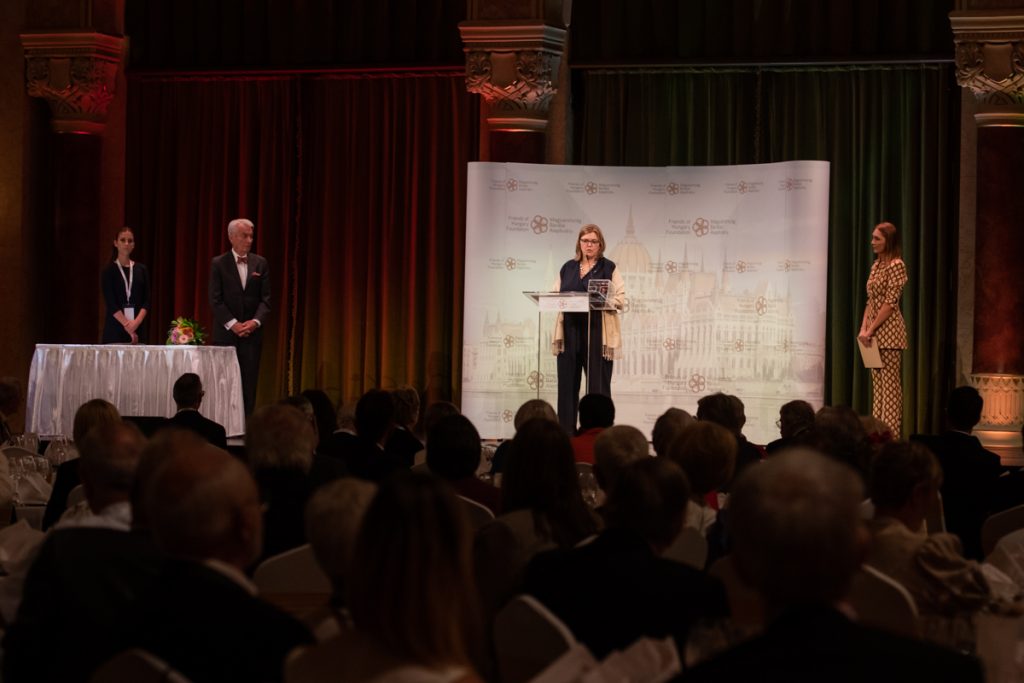
How can you navigate in this landscape?
Our challenge at the Coalition has always been to remain independent and bipartisan. This is extraordinarily difficult but important. Since our founding, we‘ve worked with something like eight different US administrations and six different Hungarian governments. We have to walk a fine line, so that no matter who is in the White House or the Parliament, we are seen as a respected and reliable source of information by all parties. For right now, I think our biggest role is to provide the context for greater understanding and to keep the lines of communication flowing.
How do the Coalition and the Friends of Hungary Foundation cooperate? What is your opinion on the annual conference?
It is a fantastic networking opportunity for everyone. I love that it is such an international group. I hope to find specific projects for us to work on together. Several years ago, we talked about reaching out to the membership of Friends of Hungary to do interviews with the 56-ers as part of Memory Project. This would be a great opportunity to try to record those all-important personal testimonials. It provides context and it provides connection. And those are all things we can build on together to help Friends of Hungary get the word out and to do what President Katalin Novák mentioned in her speech earlier today: to strengthen the voices of the friends of Hungary.
I think we all have to be friends of Hungary – the Hungarian Nation, the Hungarian people, the traditions, the customs, the culture, the history – in whatever way we can. It is an important part of us. No matter where we live, we are all richer because of our connection to this incredible country.
Photos by Hungary Today